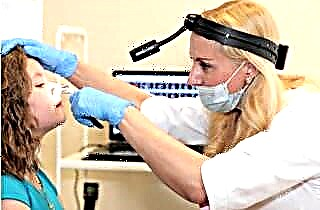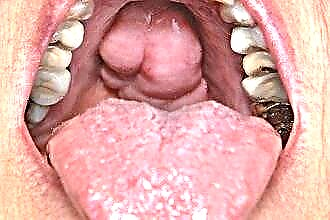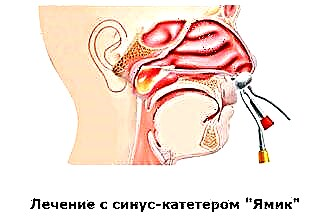The resulting boil in the nose causes discomfort to the patient, it causes pain when pressed, and in a severe course of the disease, there are signs of general intoxication of the body. The disease is quite dangerous to health, if you do not take timely measures to eliminate it. There are several stages in the development of the disease, all of them are characterized by special signs. It is best to consult a doctor on time, otherwise you can get serious complications up to and including death.
Provoking factors
A boil in the nose does not appear just like that, special conditions are needed for its appearance. The main causative agents of the disease are bacteria that live on our mucous membranes and skin. Under normal conditions, the body staunchly resists their reproduction, therefore no pathologies arise. However, weakening  protective functions can cause the development of inflammation and the formation of an abscess. Most often, the following factors provoke the appearance of a boil inside the nose:
protective functions can cause the development of inflammation and the formation of an abscess. Most often, the following factors provoke the appearance of a boil inside the nose:
- using dirty water for washing;
- acute or chronic diseases of the upper respiratory tract;
- drop in immunity;
- hormonal imbalance;
- infection with ascaris and other helminthic infestations;
- diabetes mellitus and other somatic pathologies;
- hypothermia;
- trauma to the nose;
- mechanical damage to the mucous membrane;
- contamination of the inhaled air.
The mechanism of formation of abscesses
A furuncle does not appear in the nose immediately. Initially, when hair follicles or sebaceous glands become infected, bacteria begin to damage healthy cells, causing the body to respond with inflammation. The site of infection turns red, there is swelling, and pain is felt when pressing on the soft tissues. Only later, when the pathogenic microflora begins to multiply, the so-called "core" of the abscess is formed, it consists of dead parts of the hair follicle.
In the absence of treatment, an abscess appears, it can be recognized by a white or yellow "cap". The furuncle itself at this time acquires a conical shape, the abscess is clearly visible, it goes up. Very rarely, there are cases when an abscess is aborted without opening, it simply dissolves, most often pus comes out through a hole in the skin.
Causative agents of violation
 The reasons for the appearance of boils lie in the bacteria that constantly live on our body. These are streptococci and staphylococci, they most often provoke the appearance of abscesses. Staphylococci are attached to the mucous membrane and skin with teichoic acid; it resembles glue in consistency. Their membranes contain proteins that block antibodies produced by the body, making the immune response ineffective.
The reasons for the appearance of boils lie in the bacteria that constantly live on our body. These are streptococci and staphylococci, they most often provoke the appearance of abscesses. Staphylococci are attached to the mucous membrane and skin with teichoic acid; it resembles glue in consistency. Their membranes contain proteins that block antibodies produced by the body, making the immune response ineffective.
Microorganisms grow rather quickly, as they can divide in several planes.... They do not respond to antiseptics that produce active oxygen, such as hydrogen peroxide. They are also insensitive to the effects of antibiotics based on penicillin and cephalosporin, since they suppress their active substances using β-lactomases.
Several times less often, a nasal furuncle appears due to the negative effects of streptococci. They are attached to mucous membranes with special cilia, but they can also use dust as "glue". The microorganisms are covered with a capsule that blocks the action of the immune system.
Also, the inflammatory-purulent process can be provoked by other microbacteria, which are distinguished by a high degree of pathogenicity. It is quite difficult to completely cure the diseases caused by them.
Stages of the disease
There are several degrees of bacterial infection in the nasal passages. It is important to find out which boil is located on in order to choose the most effective treatment. Different stages of the disease have different symptoms and require a different approach to fixing the problem. Let's consider them in more detail.
- Easy stage. It proceeds quickly enough and without complications. When bacteria begin to actively multiply in the hair follicle or sebaceous gland, the hyaluron dissolves, which causes a local reaction in the body. The immune system directs all antibodies to the affected
 the site, because an infiltrate (fluid accumulation) is formed around it. The area in which the boil is formed hurts and pulsates, itches, the number of abscesses varies from 1 to 3. Sometimes there is an increase in lymph nodes located near the infection. The abscess opens on its own after 5-7 days, after which the wound heals quickly.
the site, because an infiltrate (fluid accumulation) is formed around it. The area in which the boil is formed hurts and pulsates, itches, the number of abscesses varies from 1 to 3. Sometimes there is an increase in lymph nodes located near the infection. The abscess opens on its own after 5-7 days, after which the wound heals quickly. - Stage of moderate severity. Recurrent illness causes more severe symptoms. If the patient does not treat abscesses, then they can return up to several times a year. In this case, the affected area and the number of abscesses grows each time, carbuncles (a group of combined boils) may form. The body activates its forces to fight the disease, this is indicated by an increased body temperature, general weakness, increased sweating, and disability.
- Third stage. This is the most advanced degree of the disease, in which boils almost never go away, they constantly appear in new places, occupy more and more areas of the mucous membrane or skin. In place of old abscesses, crusts form, which swell again after a while. In this case, the symptoms are smeared, the patient no longer feels such severe itching during the formation of boils. However, other, more alarming symptoms appear: the patient constantly feels weak, he cannot lead the usual way of life. This condition is caused by a high degree of intoxication of the body, because bacteria release toxins that enter the bloodstream and poison the body, while the immune system is suppressed.
What is the danger of the disease
 The appearance of a boil in the nose is by itself an unpleasant phenomenon that causes a lot of discomfort. However, severe symptoms are not yet the worst thing that a violation leads to. Its danger lies in the fact that the capillaries, which are located in the nose, go directly to the brain. This means that when an abscess is opened, the infection can enter the bloodstream and be transported directly to the brain, which is a direct threat to life. Such complications are possible in case of untimely and incorrect treatment of an abscess:
The appearance of a boil in the nose is by itself an unpleasant phenomenon that causes a lot of discomfort. However, severe symptoms are not yet the worst thing that a violation leads to. Its danger lies in the fact that the capillaries, which are located in the nose, go directly to the brain. This means that when an abscess is opened, the infection can enter the bloodstream and be transported directly to the brain, which is a direct threat to life. Such complications are possible in case of untimely and incorrect treatment of an abscess:
- inflammation of the tissue of the orbit;
- ocular vein thrombosis;
- facial vein thrombosis;
- meningitis;
- encephalitis and others.
Treatment methods
Seeing a doctor is necessary when the first symptoms of a boil are detected. Even if the abscess is not yet visible, you need to go to the clinic. The sooner you start treatment, the more likely you are to avoid serious complications. The choice of therapy depends on such factors:
- stage of the disease;
- a history of the disorder;
- the presence and severity of symptoms;
- features of the patient's body;
- the presence of concomitant diseases;
- the type of pathogen and its reaction to medications.
To determine all the features of the violation, the doctor must perform an examination, interview the patient, and conduct a laboratory study of the microflora taken from the affected area. Also, additional tests are prescribed to identify eggs of worms in the feces, to the level of sugar in the blood and to hormonal levels.
After conducting all the studies, the doctor can choose the treatment:
 Local. It is carried out at home using ointments, creams and solutions that treat the nasal mucosa.
Local. It is carried out at home using ointments, creams and solutions that treat the nasal mucosa.- General. It is prescribed to suppress pathogens.Antibiotics are administered intravenously or intramuscularly, less often they are taken orally.
- Immunomodulators. With recurrent furunculosis, the doctor may prescribe a course of immunomodulators that will increase the body's resistance to bacteria and strengthen local immunity.
- Autohemotherapy. In other words, this procedure is called a "blood transfusion". It is performed on an outpatient basis, the patient's venous blood is injected subcutaneously according to a special scheme. The effectiveness of this method is not recognized by all doctors.
- Surgical dissection. This is an extreme measure that is used for abscessing a boil. The operation is performed under general anesthesia or local anesthesia, it does not take much time. By dissecting the abscess with a scalpel, all purulent masses are removed, the wound is washed and a drain is inserted into it.
How to avoid it
 Preventive measures must be applied not only to those who are prone to the appearance of boils, but also to those who simply care about their health. Following simple tips will help you protect yourself from an unpleasant and very dangerous disease. Follow these recommendations:
Preventive measures must be applied not only to those who are prone to the appearance of boils, but also to those who simply care about their health. Following simple tips will help you protect yourself from an unpleasant and very dangerous disease. Follow these recommendations:
- observe personal hygiene;
- monitor the quality of the inhaled air;
- do not work in hazardous enterprises without protective equipment;
- treat infectious ENT diseases in time;
- avoid injuries to the nose and mucous membranes;
- seek medical attention in time.
Let's summarize
Boils in the nose can jump up in any person, but special conditions are necessary for their appearance.... Not only the presence of pathogenic microflora on the mucous membranes provokes inflammation and suppuration, but also a drop in immunity. In order to cure the disease in time and prevent complications, you should immediately consult a doctor who will prescribe effective treatment.

 the site, because an infiltrate (fluid accumulation) is formed around it. The area in which the boil is formed hurts and pulsates, itches, the number of abscesses varies from 1 to 3. Sometimes there is an increase in lymph nodes located near the infection. The abscess opens on its own after 5-7 days, after which the wound heals quickly.
the site, because an infiltrate (fluid accumulation) is formed around it. The area in which the boil is formed hurts and pulsates, itches, the number of abscesses varies from 1 to 3. Sometimes there is an increase in lymph nodes located near the infection. The abscess opens on its own after 5-7 days, after which the wound heals quickly. Local. It is carried out at home using ointments, creams and solutions that treat the nasal mucosa.
Local. It is carried out at home using ointments, creams and solutions that treat the nasal mucosa.

